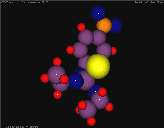|
|
|
|
|
Biobottle Instructions and Supplies Generally you need to decide the following things before you begin construction:
|
|||||
|
|
All of the following materials except the bottles are available in room C-8 for you to use. You may also look in the biobottle books for examples as well as look at the demonstration biobottle. Basic supplies needed to make a biobottle:
|
||||
|
|
All of the following materials are available for you in room C-8. Suggested abiotic components to add to the biobottles:
|
||||
|
|
Organisms highlighted in red are available in room C-8 the rest need to be gathered outdoors. Suggested biotic components to add to the biobottles:
|
||||
 |
|||||
  |
|||||
|


